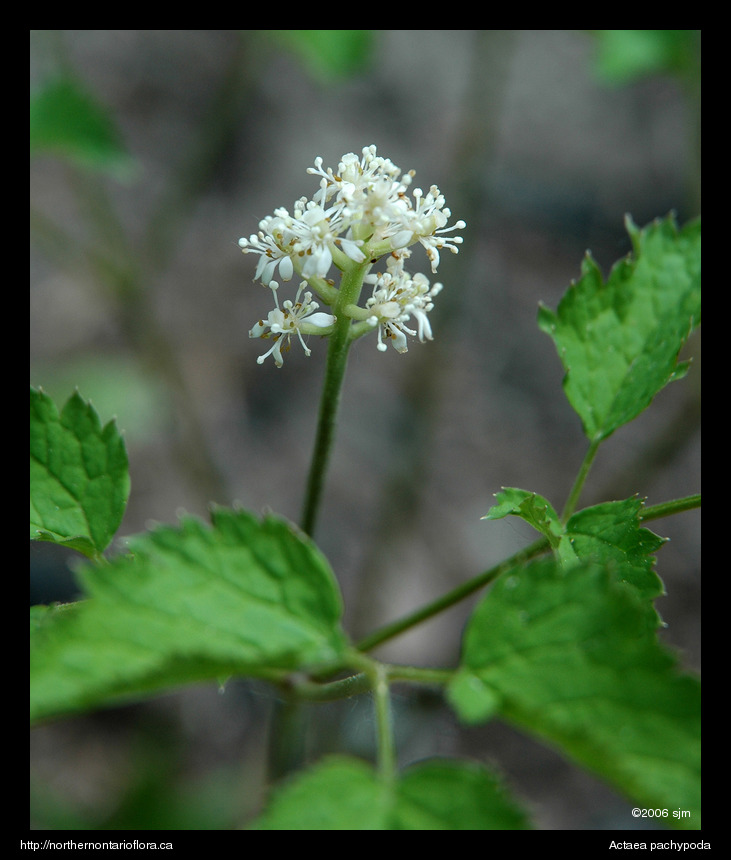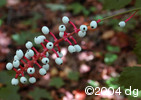
|
Northern Ontario Plant Database 
Plant DescriptionActaea pachypoda ElliottEn: white baneberry, doll's-eyes
Ranunculaceae (Buttercup or crowfoot Family) General: A perennial forb, 4–8 dm tall, the plant smooth (glabrous). Leaves: Alternate, compound, divided into 3 main branches, each bearing 3 or more stalked leaflets. (ternately compound), pinnately-veined, smooth (glabrous), petiolate. Leaflet blades ovate to obovate, divided towards the tip; leaflet bases tapering (cuneate); apices pointed (acuminate); margins irregularly and sharply toothed (serrate). Flowers: Bisexual; the several, small flowers arranged in a terminal raceme; flower stalks (pedicels) 1–2 mm thick. Sepals 4–5, falling shortly after the flowers open (sepals caducous); petals 4–10, white, narrowly oblanceolate or spatulate, 2.5–4 mm long; stamens numerous, the filaments white and longer than the single pistil; the superior ovary topped by a wider, sessile stigma that persists in fruit. Flowers bloom in June. Fruit: A cluster of ovoid, white (rarely red) berries, smooth (glabrous), each marked with a prominent pupil-like dark red to blackish dot at the end of fruit, formed by the persistent dried stigma. The flower stalks (rachis and pedicels) turn bright red at maturity. The somewhat poisonous berries mature in summer. Habitat and Range: Rich deciduous or mixedwoods and thickets. The white baneberry is native to eastern North America; in Ontario, it occurs as far north as the southeast shore of Lake Superior (Algoma District). Internet Images: The Actaea pachypoda webpage from the Gallery of Connecticut Wildflowers, a website of the Connecticut Botanical Society. Similar Species: Actaea rubra, the red baneberry, can be distinguished by its much thinner flower stalks (pedicels), which are less than 0.7 mm thick, and its more numerous leaflets. Its fruits are usually red, but white forms do occur; the black dot (remains of the stigma) at the end of the berry is much smaller and less conspicuous than the black pupil-like dot found on the fruit of the white baneberry. See the Actaea rubra webpage from the Gallery of Connecticut Wildflowers, a website of the Connecticut Botanical Society. Back to species list |
||||||||||||||||||||||









